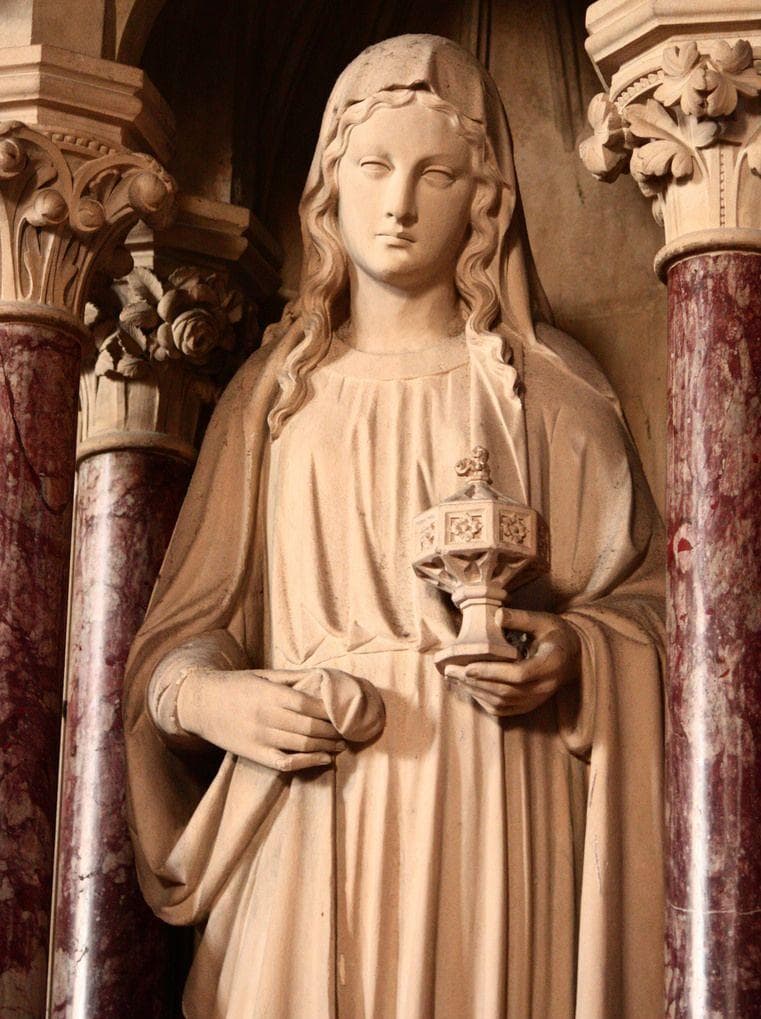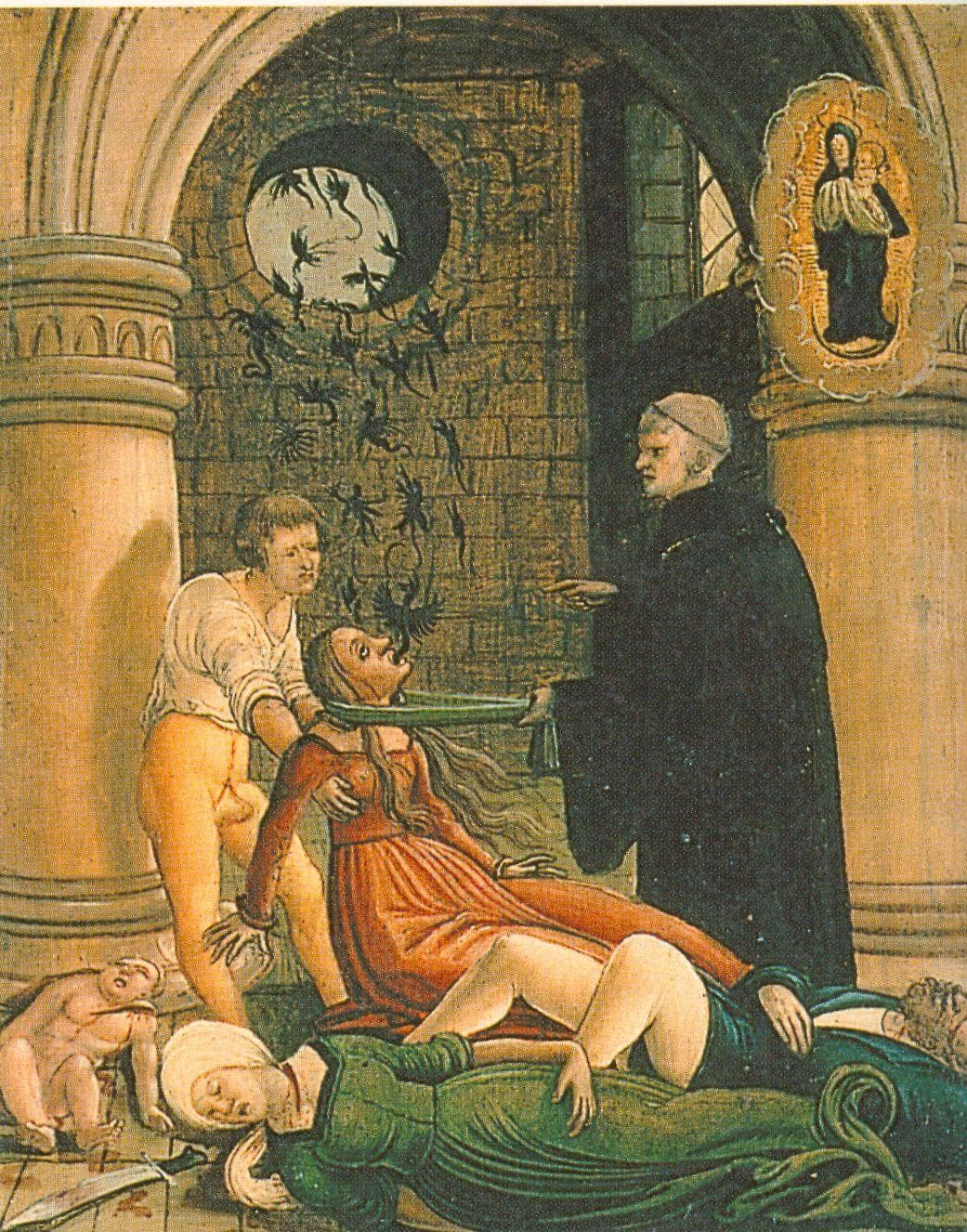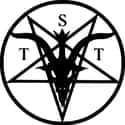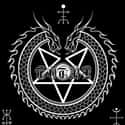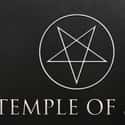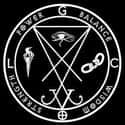-

(#9) Polytheistic Satanism
This brand of theistic Satanism reveres Satan as one of many gods. Through devotion and freedom of thought, Polytheistic Satanists attain their spiritual goals. Their beliefs combine pagan and occult ideas, as well as other esoteric traditions. Some of these Satanists have created a group called the Church of Azazel, more of an online organization than an in-person group.
Theistic Satanist Diane Vera started the Church of Azazel in New York City. As she shares on its official website, "Our pantheon includes Satan/Azazel, whom we see as a very multi-faceted deity, and a set of five distinct deities whom we call the Rising gods of the modern West: Lilith, Prometheus, Ishtar/Astarte, Pan, and Lucifer-of-Sophia."
Polytheistic Satanists seek a balance between emotion-based worship and intellect-based philosophy, believing that it is the key to accessing wisdom. Vera writes, "We believe that Satan wants us to think for ourselves. To that end, we encourage Satanists to learn informal logic, debating skills, etc., and to think carefully about our worldviews and their foundations."
-
(#3) The Satanic Temple
The Satanic Temple is a non-devotional, secular organization established in 2013 to fight for equal religious representation and challenge authoritarian politics. Cofounder Lucien Greaves describes it as "a non-theistic movement aligned with Liberty, Equality, and Rationalism." This New York-based group has become well known for using the First Amendment to push for the erection of Satanic statues in public places, most notably Illinois, Michigan, and Arkansas.
While it took this theatrical approach to public engagement from the Church of Satan, the Satanic Temple has worked hard to set itself aside from Anton LaVey's group. The Satanic Temple has no interest in pursuing supernatural beliefs or esoteric magic. They are invested in political activism and social mobilization. As Greaves writes on the Satanic Temple's website, "Beliefs should conform to one’s best scientific understanding of the world. One should take care never to distort scientific facts to fit one’s beliefs."
-
(#11) Demonolatry
Demonolatry is what it sounds like: the worship of demons. While the worship of demons reaches back millenia, the most modern variant of this religious ideology is succinctly laid out in 2008's The Complete Book of Demonolatry by S. Connolly.
Devotees choose their own demons to follow. Like Satanism, Demonolatry is all about personal automony and choice. Participants believe "there are Demons for love and healing just as there are Demons for anger and destruction. For every Demon there is an equal and opposite Demon."
Connolly's book lists more than 200 demons and their attributes. People are free to pick and choose those demons who speak to them the most.
-
(#5) Anti-Cosmic Satanism
While they refer to themselves as Satanists, those who follow Anti-Cosmic Satanism actually participate in a form of occultism based on diverse ancient traditions, Gnosticism, and dark magic practices. In 1995, the Misanthropic Luciferian Order was established in Sweden. One of its earliest members was John Nödtveidt of the metal band Dissection. He told an interviewer, "Our goal is to create a synthesis between the dark traditions of all aeons, this way creating the occult keys that shall open the gates to the forthcoming endless dark aeon."
Anti-Cosmic Satanists believe that the cosmic world created by "God" is false, and they strive through their rituals and beliefs to unleash the true world, the anti-cosmic world, which is one of absolute chaos. "Satan/Lucifer is the external and eternal aspect of the anti-cosmic and sinister impulses, which constitute the deepest essence of our inner black flames," Nödtveidt told another interviewer. To adherents, Satan is just one of many names attributed to the pantheon of forces guiding them.
The Misanthropic Luciferian Order was eventually renamed the Temple of the Black Light, which has an active following around the world. One of the more nihilistic takes on Satanism, Anti-Cosmic Satanism lays out its beliefs in the Liber Azerate, which contains detailed descriptions of the anti-cosmic world, referred to by followers as the "Chaosophy."
-
(#2) Temple of Set
Temple of Set practitioners harness spiritual, theistic beliefs based on the existence of different gods. Michael Aquino and Lilith Sinclair broke away from the Church of Satan to establish this sect in 1974. While it's considered a branch of Satanism, Setian philosophy includes multiple deities, some analogous to Satan and others based on the Egyptian god Set.
The High Priestess of Set explains the sect's purpose on their website, writing, "The Temple of Set is an organization with one task: to provide an environment in which individuals discover, pursue, and realize their unique purpose and destiny." The organization is made up of orders, pylons, conclaves, and gilds.
Setians believe in pursuing the spiritual quality of inner consciousness, a quality "slandered and suppressed by conventional religions that claim its powers for themselves, dismissed by others as unreal, and feared by those who would flee the personal responsibility implied."
-
(#4) Luciferians
Luciferians look to the Hebrew Bible's interpretations of Lucifer as the "light-bearer" for inspiration. Less a sect of Satanism than its own unique offshoot, Luciferianism adheres to the pursuit of knowledge, freedom of choice, and connecting to one's inner power in a more spiritual sense. Grounded in psychology, yet also attached to the esoteric nature of human beings, Luciferians look to their namesake not as a god, but as a spirit guide toward enlightenment.
Luciferian ideas predate Christianity, but the most modern iteration of this belief system is seen in the Greater Church of Lucifer, established by Michael W. Ford in 2007. Based in Texas, the church is supported by an extensive website called Luciferian Apotheca. In addition to being a place to purchase occult wares, the website also summarizes the group's take on Luciferianism. As Ford writes, "Luciferians find the symbolism of demonic gods, or ‘deific masks’ as representations of either a power or phenomena in nature and within the mind. It is the ‘bridge’ between both, the initiation, which unlocks the wisdom of darkness."
Essentially, Luciferians are against deification or dogmatic religious beliefs, but instead believe that deities like Lucifer are metaphors for what's stored within each person and for what has potential to be tapped into by following the lefthand path.
New Random Displays Display All By Ranking
About This Tool
Satanism refers to a sect that believes in Satan. Since Satan has been the incarnation of evil since the Middle Ages, Satanism has been controversial during the centuries of its development and was considered by most to be a cult. The cover of the Satanist Bible is an inverted five-pointed star. Modern Satanism is a general term for various beliefs and customs. In fact, few people can clearly understand the doctrines and sects of different branches of Satanism.
Do you know any other typical sects of different branches of Satanism? The random tool displays 13 different Satanist sects that you may have seen somewhere.
Our data comes from Ranker, If you want to participate in the ranking of items displayed on this page, please click here.




